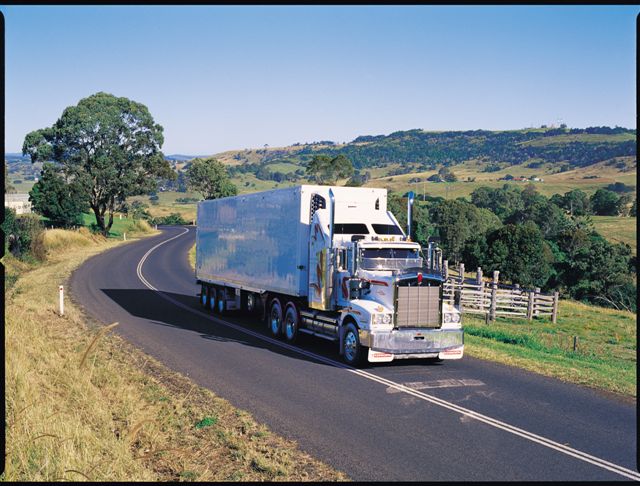Submission to the National Transport Commission
Executive summary
- Governments should improve implementation of the current Assessing Fitness to Drive (AFTD) guidance across cardiovascular, diabetes and sleep disorder chapters (Option B)
- Stronger focus should be placed on the expansion of free and non-regulatory health screenings provided (or facilitated) by Healthy Heads in Trucks and Sheds
- Proposals for prescribed screening need further consideration, including consideration of access to medical services and undertaking a cost benefit analysis of the proposals
- Further consideration should also be applied to the inconsistent application of health assessments by jurisdictions.
The National Transport Commission (NTC) discussion paper Improving health screening for commercial vehicle drivers was released in March 2025 and provides options to improve driver health screening, in response to a request from Transport Ministers.
The discussion paper provides a detailed overview of the current arrangements for the AFTD standards and driver health screening, road safety outcomes and the health of commercial vehicle drivers, the prevalence and current screening approaches for the three medical conditions in focus, international approaches and reform options.
This submission responds to the reform options. Further background and context is available from the NTC project page or discussion paper.
Summary of proposed reform options
| Option | Description |
| Option A: No change | A: No change to content relating to the 3 clinical areas Retain the status quo. This means the current content in AFTD will remain unchanged and actions to undertake screening and manage risk will be at the discretion of the examining health professional. |
| Option B: Improved implementation NatRoad supported option | B: Improve implementation of current AFTD guidance across the cardiovascular, diabetes and sleep disorder chapters This option involves strengthening implementation efforts to facilitate awareness and application of the guidance relating to screening. For example through: awareness and education for medical practitioners for assessing commercial vehicle drivers in general and assessing and managing cardiovascular risk, diabetes and sleep disorders redeveloping forms to include CVD Risk Calculator questions, STOP Bang, OSA-50 or the Berlin questionnaire educating drivers about cardiovascular disease risk, diabetes and sleep disorders. This option does not introduce changes to licensing criteria linked to the current screening requirements. |
| Options 1C, 2C and 3C: Prescribed screening | 1C: Prescribe cardiac risk screening and facilitate implementation This option involves defining and prescribing specific requirements for cardiovascular disease risk assessment and management in AFTD, with changes supported by forms and other implementation initiatives as per option B. This may involve updating the content in ‘Part B: Chapter 2 Cardiovascular conditions’ to include: updated general guidance in AFTD on assessing and managing cardiac risk for commercial vehicle drivers more detailed information in AFTD to facilitate appropriate assessment using the Australian Cardiovascular Disease Risk Calculator including managing levels of risk. Option 1C also involves updating the Austroads health questionnaire, clinical health record and the report form to align with the changes, acknowledging there will be no changes to licensing criteria. |
| 2C: Prescribe diabetes screening and facilitate implementation This option involves defining and prescribing specific requirements for diabetes screening in AFTD including risk screening and/or pathology testing, with changes supported by the forms and other implementation initiatives as per option B. This may involve updating the content in ‘Part B: Chapter 3 Diabetes mellitus’ to include: applying the Australian Type 2 Diabetes Risk Assessment Tool (AUSDRISK) every 5 years for commercial vehicle drivers not previously diagnosed or declared to have diabetes and subsequent blood testing for those found to be at high-risk, or routine non-fasting single blood test for HbA1c every 5 years for commercial vehicle drivers not previously diagnosed or declared to have diabetesupdating the general guidance for commercial vehicle drivers and diabetes in AFTD to support improved management. Option 2C also involves updating the Austroads health questionnaire, clinical health record and the report form to align with the changes, acknowledging there will be no changes to licensing criteria. | |
| 3C: Prescribe sleep disorder screening and facilitate implementation This option involves defining specific requirements for sleep disorder screening in AFTD, with changes supported by the forms and other implementation initiatives as per option B. This may involve updating the content in ‘Part B: Chapter 8 Sleep disorders’ to include: more comprehensive guidance for assessing the risk of sleep apnoea and other sleep disorders, including identification of a preferred risk assessment tool (the STOP-Bang is favoured for consistency with rail) new content on referrals for polysomnography, interpreting results and management considerations including fitness for duty decisions when a commercial vehicle driver is referred for a sleep study new content about the interface with fatigue management, including recognition of the role of fatigue monitoring technology and workplace reports of incidents. Option 3C also involves updating the Austroads health questionnaire, clinical health record and the report form to align with the changes, acknowledging there will be no changes to licensing criteria. |
Improved implementation
NatRoad supports option B, to improve implementation of current AFTD guidance across the cardiovascular, diabetes and sleep disorder chapters.
The NTC discussion paper highlights that the benefits of this option may include:
- improved confidence of health professionals in conducting health assessments for commercial vehicle drivers
- improved consistency and quality of health assessments
- early identification and management of risk factors for chronic disease
- early identification and management of chronic conditions including CVD, diabetes and sleep disorders
- closer integration of health assessments conducted for fitness to drive with routine management of driver health
- improvements in road safety outcomes
- reduced ongoing impact on health system.
The NTC paper also notes that the benefits are more likely to be realised in jurisdictions and industries with periodic assessment requirements.[1]
Inconsistent and incomplete application of current assessment approaches
As outlined in the NTC paper, the benefits from the proposed reforms (under any of the proposed reform options) would only be achieved under existing licensing and accreditation approaches, which do not include all drivers.
Any supported changes to screening approaches will be applied by driver licensing authorities and accreditation schemes within their current health assessment frameworks, i.e. screening for the three conditions will not be introduced in systems that do not currently require medical assessments as a part of the licensing or driver accreditation process.[2]
Australia has over 180,000 employed truck drivers, and well over 2 million people licensed to drive heavy vehicles. A majority of these licensed drivers are for rigid vehicles, with over 600,000 people licensed to drive combination vehicles. There are about 58,000 road freight businesses/operators.[3]
Accreditation schemes cover a minority of the industry. The NTC identifies that there are about 5,034 operators in the state based Western Australia Heavy Vehicle Accreditation system, there are about 3,178 in the National Heavy Vehicle Accreditation Scheme (run by the National Heavy Vehicle Regulator, but excluding WA and the NT), and about 183 operators in TruckSafe (run by the Australian Trucking Association).[4] At most, this represents about 14.5 percent of road freight operators, noting some businesses would be enrolled in multiple schemes.
The application of health assessment as part of licensing is vastly inconsistent, ranging from jurisdictions that apply no health assessment through to the periodic assessment that applies in the Australian Capital Territory.[5]
The proposed reforms will only affect a minority of drivers in the industry, reducing the level of any projected safety benefits.
The proposed reforms will increase health assessment requirements (and the associated regulatory costs) on the businesses and drivers who are already demonstrating best practice, whilst doing almost nothing to address the existing gaps in driver health screening for those not currently covered.
There should be a more wholistic assessment of reform options, including the costs and benefits of expanding periodic assessments to all jurisdictions. There may be stronger safety benefits from expanding a form of periodic health assessments to more jurisdictions, then there would be from increasing the requirements on those who already undertake them.
Further assessment of prescribed screening
In addition to more wholistic assessment of reform options, the prescribed screening options should be subject to a cost benefit assessment and include consideration of need for increased access to health services by the industry.
In consulting with members, NatRoad found that some operators already provide assessments that largely align with this higher level of health screening, but with discretion firmly residing with the treating medical professional.
The impacts and costs of this option need further development.
Expanding non-regulatory free health screening
As part of NatRoad’s recommended option B (improved implementation), NatRoad recommends that a stronger focus should be placed on expanding non-regulatory free medical screening for drivers.
Healthy Heads in Trucks and Sheds (HHTS) already provide or facilitate free on-road health screenings, which are an important educational and behavioural change role. They currently have one vehicle which offered 350 health screenings last year, free of charge for drivers.
This approach removes barriers for drivers in terms of both cost and access to health services, and it avoids the limitations of the existing coverage of health assessment licensing and accreditation requirements. The largest shortcoming of the approach is that more drivers need access to these types of services then is currently being provided.
NatRoad understands that HHTS are well placed to expand this approach, subject to funding. This would align strongly with the educational part of option B. We consider that HHTS have the existing industry knowledge and relationships to expand this approach with success.
Governments should invest strongly in this industry-led approach and prioritise the wellbeing of our drivers and the safety of our roads. It provides a more immediate reform option for realising actual change on the road, noting that any regulatory or assessment reforms will take time.
[1] NTC. March 2025. Improving health screening for commercial vehicle drivers: discussion paper. 83.
[2] NTC. 2025. 11.
[3] NTC. 2025. 25.
[4] NTC. 2025. 12.
[5] See Table 2, in NTC, 2025, 12.



